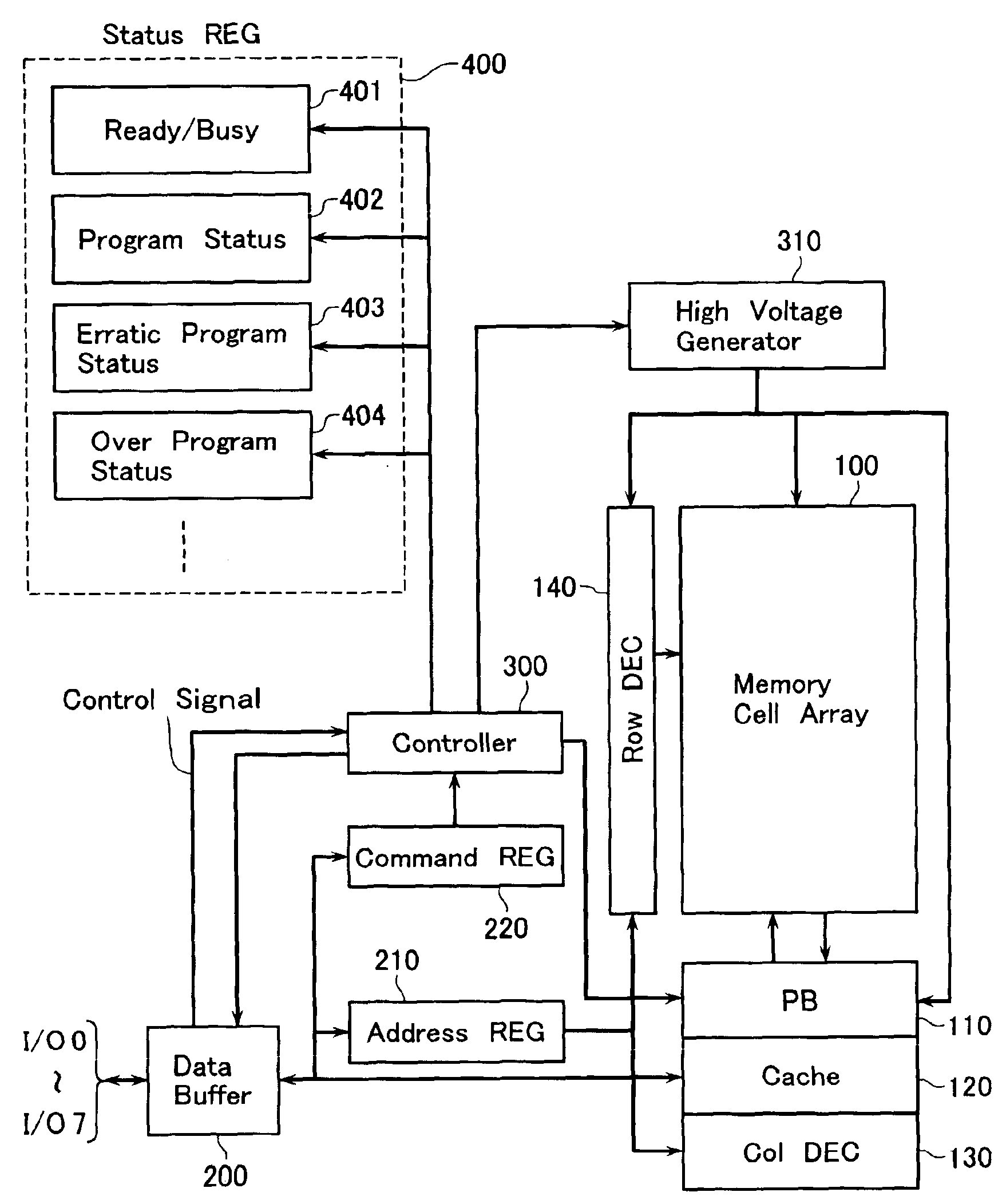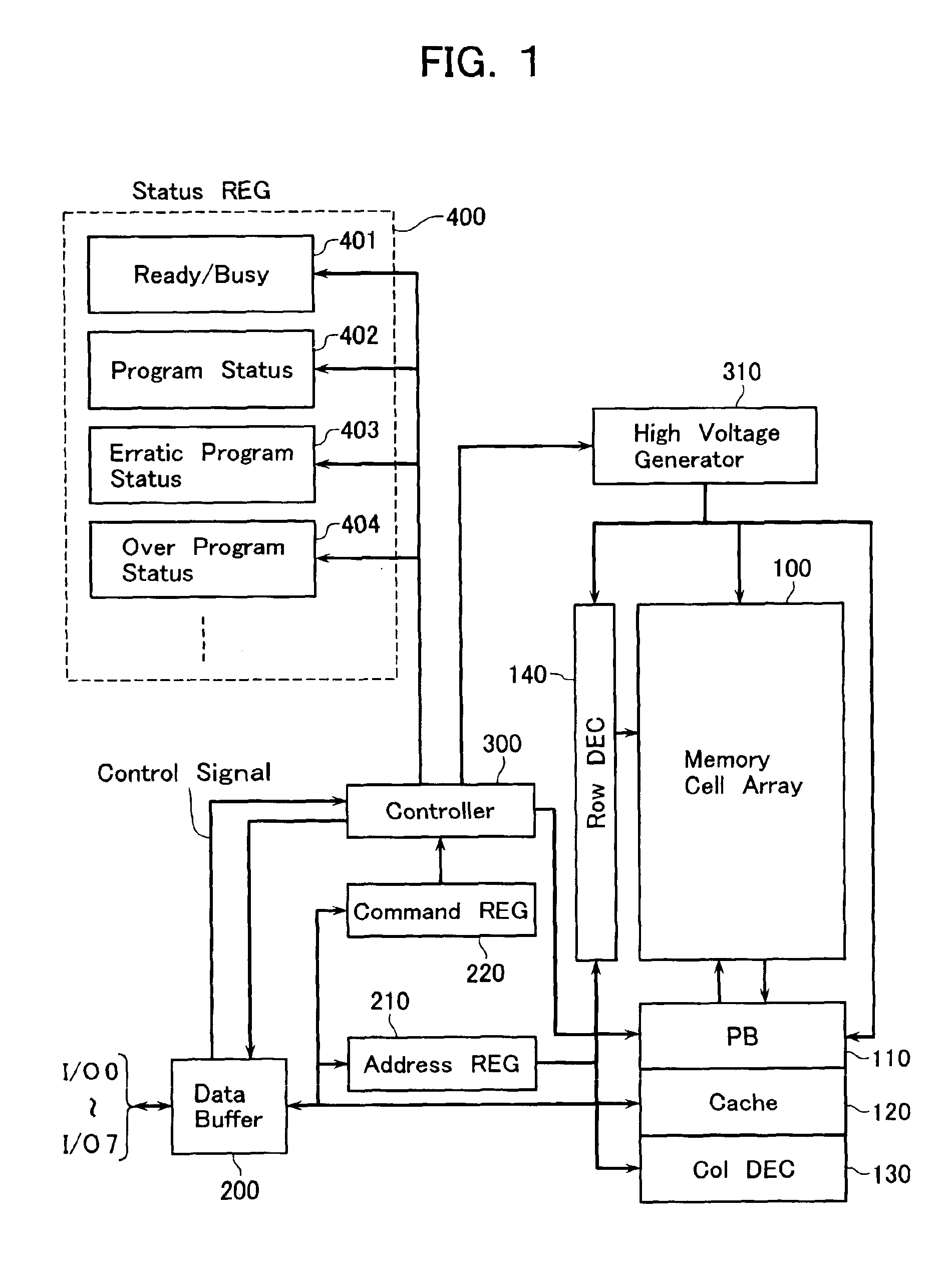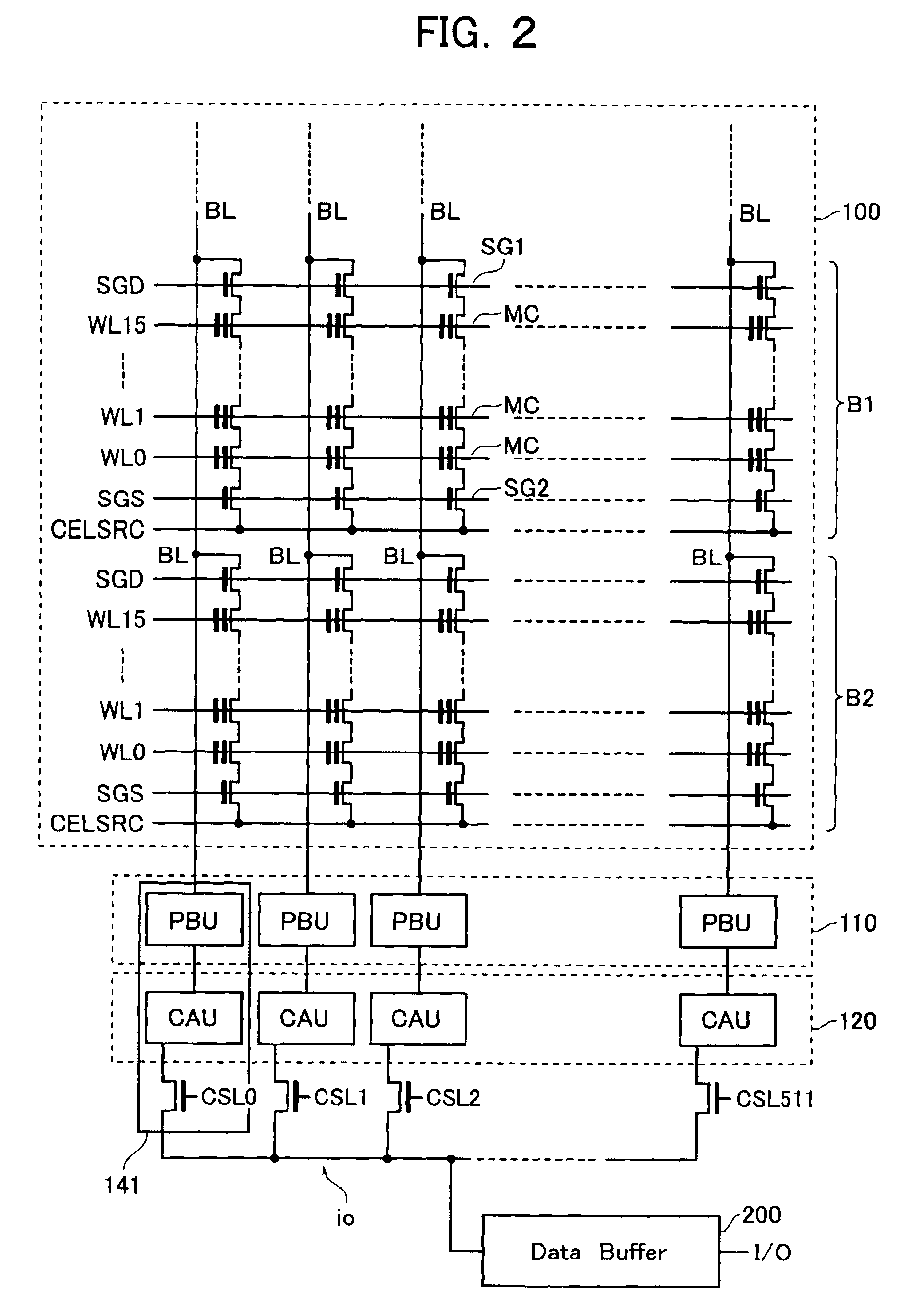Non-volatile semiconductor memory device
a non-volatile semiconductor and memory technology, applied in the field of electric eraser programmable read only memory (eeprom) devices, can solve the problems of not being able to detect this kind of fault in any way in program verification schemes, becoming a problem to be solved, and described error bits occurring in program operations
- Summary
- Abstract
- Description
- Claims
- Application Information
AI Technical Summary
Benefits of technology
Problems solved by technology
Method used
Image
Examples
embodiment 1
[0041]Referring to FIG. 1, a flash EEPROM memory chip of the NAND type in accordance with an embodiment of this invention is illustrate in block circuit form. The NAND-type flash memory includes array of rows and columns of memory cells indicated by reference numeral 100, a row decoder 140 which performs word-line selection of this memory cell array 100, and a column decoder 130 which performs bit-line selection. Also provided is a page buffer (PB) 110 with a storage capacity corresponding to a page of memory space. The page buffer 110 functions as a sense amplifier circuit which detects or senses data read out of the memory cell array 100, and also acts as a data hold circuit that stores hold program data.
[0042]In currently available NAND flash memory chips, and data bits that have been loaded into the page buffer 110 at the beginning of a program (or write) operation are to be rewritten at the termination of the program operation. In contrast, the illustrative embodiment is specif...
embodiment 2
[0089]An explanation will next be given of another embodiment 2 which is arranged to perform an over-write or over-program verify operation in addition to the erratic program verify operation of the above-noted Embodiment 1. Embodiment 2 is similar in flash memory configuration to Embodiment 1.
[0090]FIG. 7 is a flowchart of an on-chip system routine for operation control, including the over-program verify in this embodiment. This system routine is similar to that of Embodiment 1 in several process steps covering from data load step S1 up to erratic program verify step S7.
[0091]After having performed the erratic program verify operation at step S7, the routine goes to step S8 which checks the data presently held in the page buffer 110 to determine whether an erratic program verify result is “Pass” or not. Recall that “Pass” is set when all data at the node N1 is at “H.” Thus, if Yes at step S8, then the routine proceeds to step S9 which effectuates over program verify. If No at step ...
embodiment 3
[0100]FIG. 18 is a timing diagram of an erratic program verify operation which is little different from that of FIG. 16. In the flow of FIG. 16, the gate voltage BLCLAMP of the clamping NMOS transistor 9 is set at Vpre during bitline precharging and at Vsenev (13.
[0101]When a memory cell needless to be checked during erratic program verify—namely, the node N1 of latch LACTH1 within the page buffer 110—is at “H” (=logic “1” data), the bitline-applied precharge voltage is made equal to Vpre−Vt; during sensing, whether the bitline potential is higher or lower than Vsenev−Vt is the reference for logical judgment. In the pulse signal waveforms during the operation of FIG. 16, the recharge circuit 13 performs recharging of the nodes N4, N1 within the time period between time points EP8 and EP9 in order to avoid unwanted accommodation of the “L” level data to nodes N4, N1 in the case of Vpre−Vt<VseneV−Vt, which data will be “Fail” as the result of the erratic program verify.
[0102]In contra...
PUM
 Login to View More
Login to View More Abstract
Description
Claims
Application Information
 Login to View More
Login to View More - R&D
- Intellectual Property
- Life Sciences
- Materials
- Tech Scout
- Unparalleled Data Quality
- Higher Quality Content
- 60% Fewer Hallucinations
Browse by: Latest US Patents, China's latest patents, Technical Efficacy Thesaurus, Application Domain, Technology Topic, Popular Technical Reports.
© 2025 PatSnap. All rights reserved.Legal|Privacy policy|Modern Slavery Act Transparency Statement|Sitemap|About US| Contact US: help@patsnap.com



